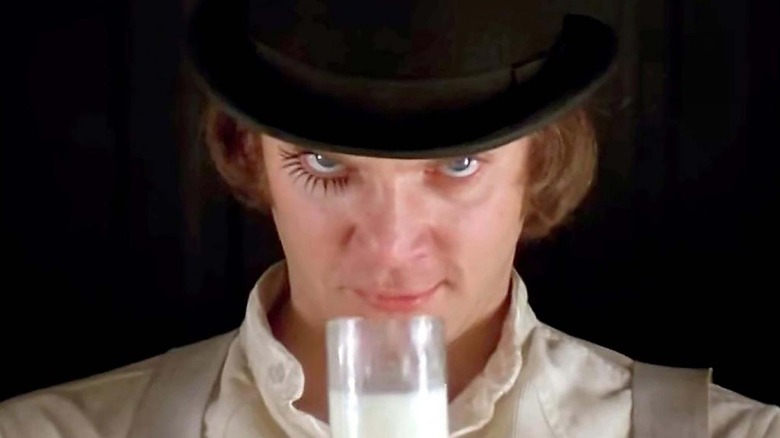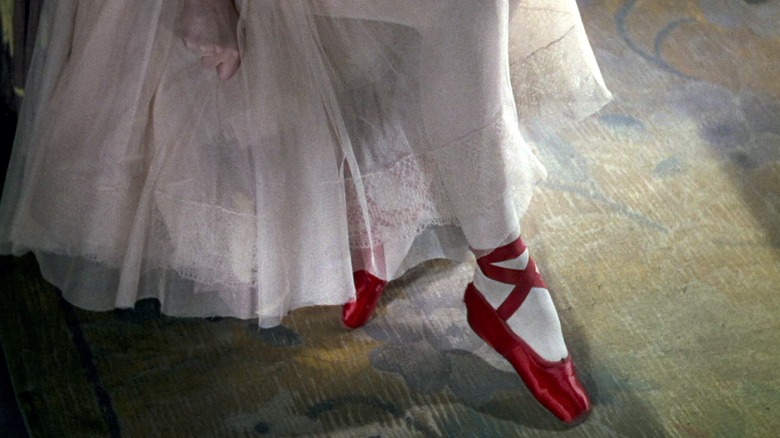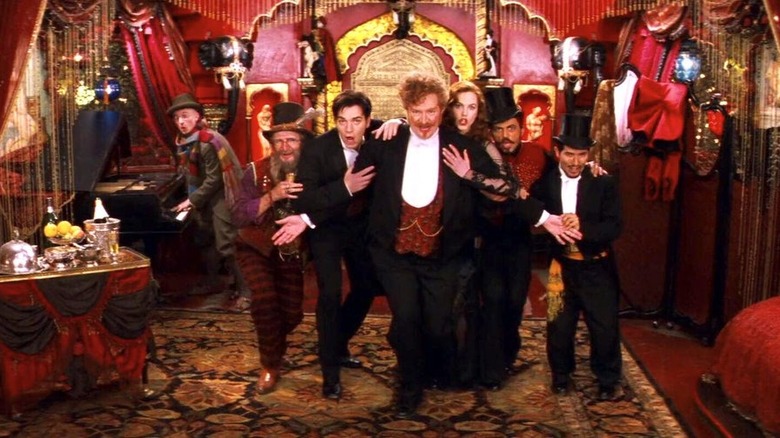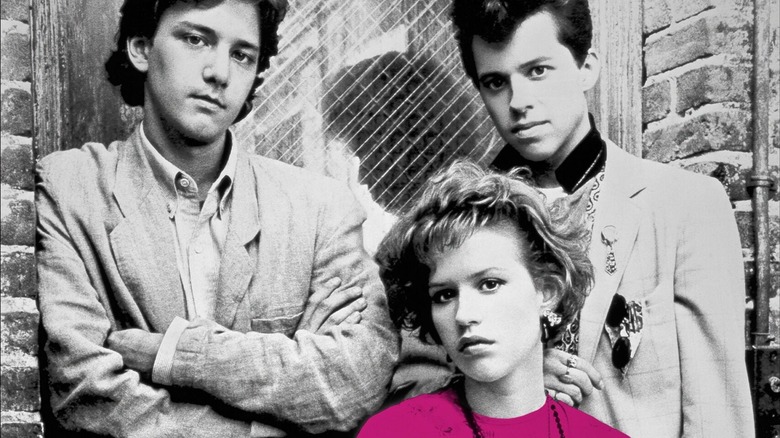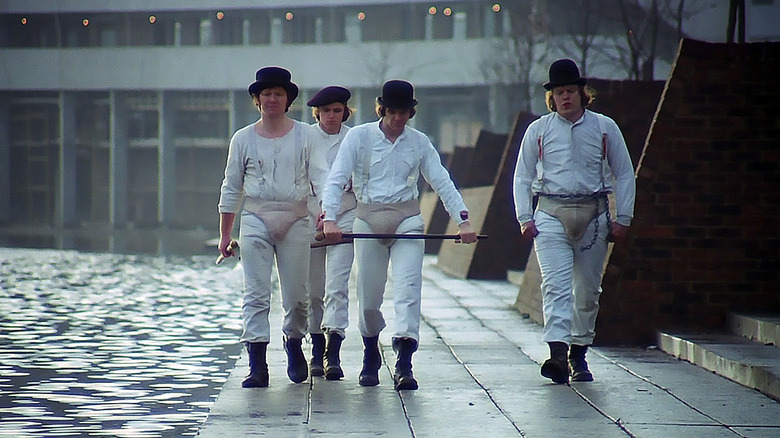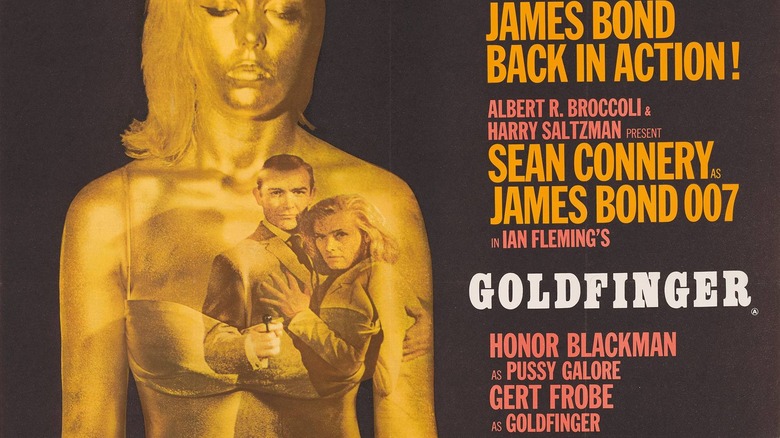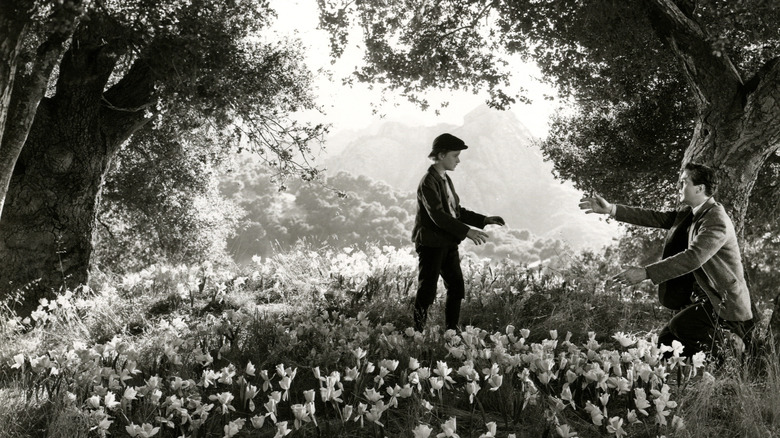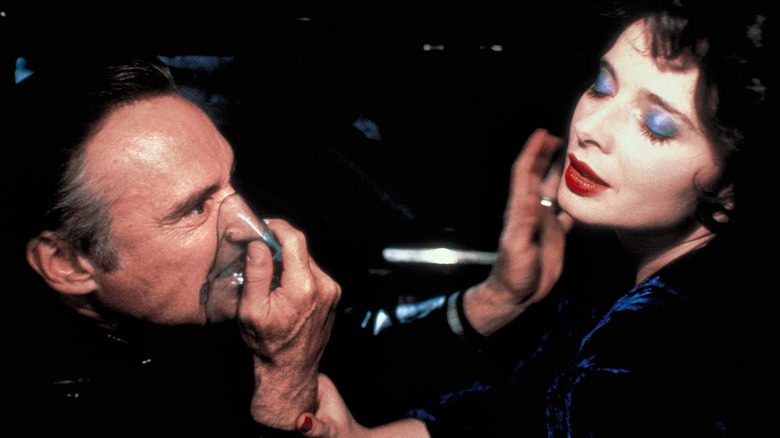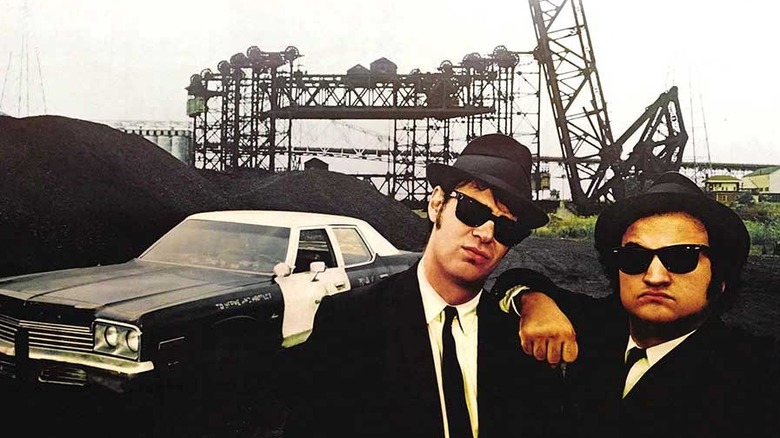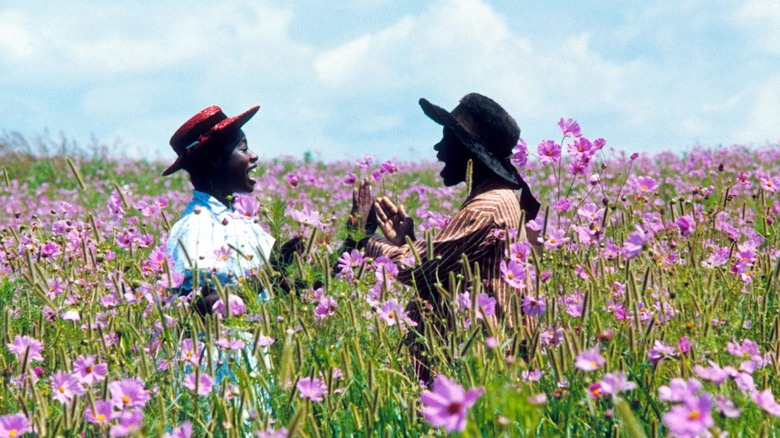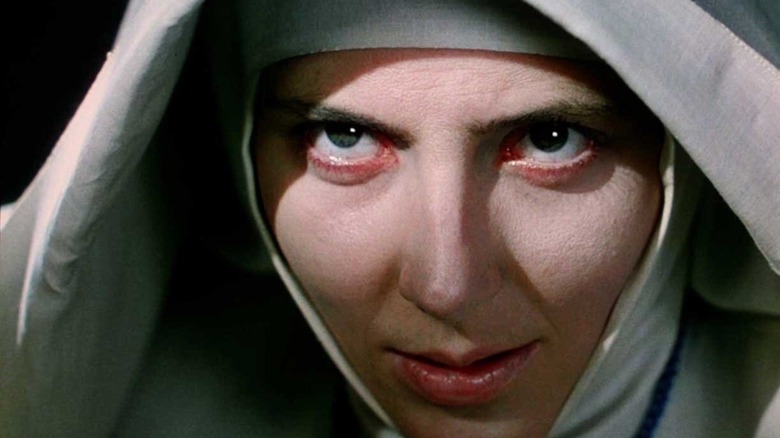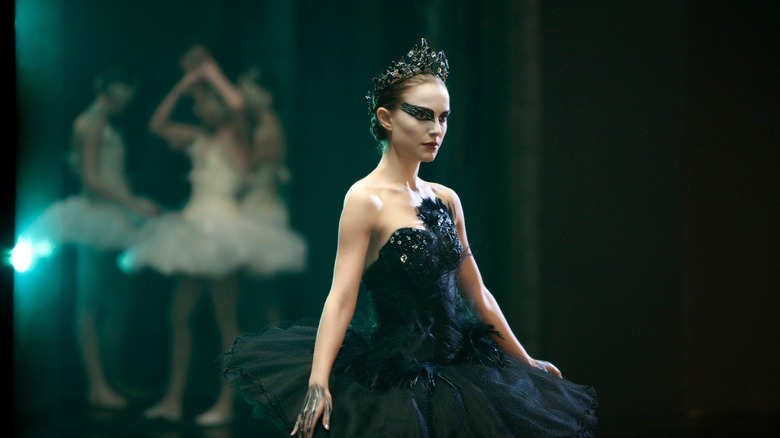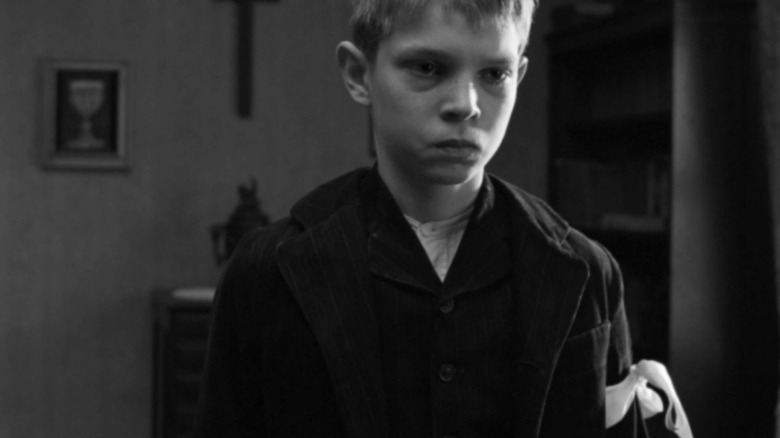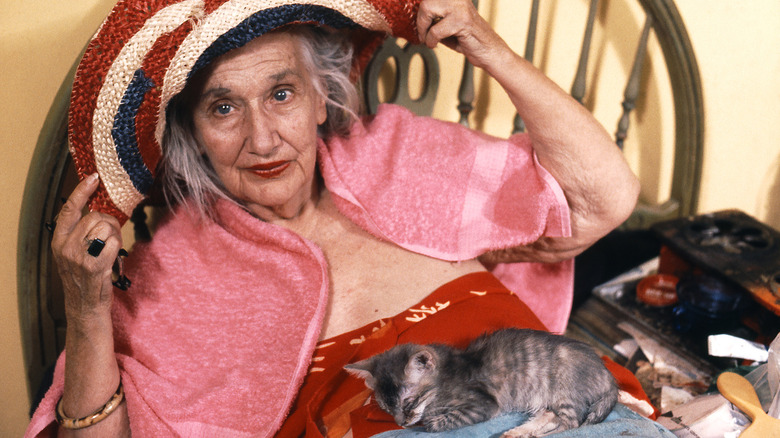Best Movies With Colors In Their Title
Our world shines bright thanks to colors. They make us emote, set our moods, and help us to differentiate one thing from another (and in some ways, divide us from one another).
When Hollywood transitioned away from black and white films to a full rainbow palette of color, there was no looking back. Ever since, no advancement has transformed cinema quite the way that color did.
Some of the most memorable movies focus on colors, and some even have a color in their title. Let's take a look at the best movies with colors in their monikers, examining the origins of how these hues made their way into those vivid title names, what they represent and symbolize, and why they still shine bright to this day.
Please note: Although white and black are considered shades and not colors, for our purposes, if it's in a Crayola box it's a color — although, we are still waiting for a movie to be made with "burnt sienna" in its title.
The Red Shoes
Hans Christian Andersen conjured up his 1845 fairy tale "The Red Shoes" ("De røde sko") based on his childhood experience of when he became obsessed with new footwear and made a scene with them in church, leading to "a horrible pang of conscience that my thoughts should be as much with my new boots as with God." Andersen's father Hans was a cobbler and there is an unsubstantiated story that he made a pair of red dancing shoes for a young girl, but the girl's mother rejected them for being "terrible." Writer Emeric Pressburger used Andersen's tale as the basis for a ballet that consumes every character in a 1948 film of the same name.
Pressburger's partner and "Red Shoes" director Michael Powell said he couldn't explain the plot any better than his ballet director character Lermontov (played with rich viciousness by Anton Walbrook) did: "It is about a young girl who is devoured by an ambition to attend a dance in a pair of red shoes. Time rushes by, love rushes by, life rushes by, but the red shoes dance on."
"The Red Shoes" brought Queen Elizabeth II to tears (when she was a young princess), and influenced a young Martin Scorsese, who has called it "one of the most beautiful color films ever made, and one of the truest to the experience of the artist, the joy and pain of devoting yourself to a life of creation." It was nominated for five Academy Awards (including Best Picture) and won two, for Best Score and Art Direction. Powell believes the real reason for its everlasting success was it "told us to go and die for art."
Moulin Rouge!
17th Century Paris was once littered with many mills, but over time, most gradually disappeared. One mill, The Moulin de la Galette, became a cabaret and inspiration for artists like Pierre-Auguste Renoir. New cafes and dance halls sprouted up with names honoring the past, including the infamous Moulin Rouge. Translated from French, moulin rouge is simply a "red mill," and the one opened by Joseph Oller and Charles Zidler in 1889 was adorned with one on its exterior. The cabaret and "temple dedicated to Woman, the Dance and the Cancan," inspired a 1952 Academy Award winning John Huston film, and a 1955 Jean Renoir one titled "French Cancan." In 2001, Australian director Baz Luhrmann used his electrifying talents and presented the world with his own "Moulin Rouge!," complete with that exclamation point!
Luhrmann and co-writer Craig Pearce were captivated by the historic venue being "a petri dish of creativity," like Warhol's Factory and Studio 54 were. Luhrmann summed up its inclusive ethos, "It doesn't matter who you are, what you are, what your background is ... In the Moulin Rouge, everyone is equal in their pursuit of truth, beauty, freedom and love."
From the first frame of action until the very last, the audience is taken on a manic rollercoaster ride of love and loss, while a modern soundtrack pulsates, and remains one of the 21st century's best.
The film was "high risk, high concept," as Luhrmann called it, and the reward for him and studio 20th Century Fox was large — earning three times its budget and eight Academy Award nominations, winning two. It even spawned a 2019 musical on Broadway.
Pretty In Pink
Molly Ringwald made such an impression on writer/director John Hughes, that as soon as their first collaboration "Sixteen Candles" ended, he went right to work on a new screenplay centered around her. Ringwald said Hughes "often used song titles for his projects since most of what he wrote was inspired by music," and when she introduced him to the Psychedelic Furs' tune "Pretty In Pink," Hughes told Ringwald in a 1986 interview, "the title stuck in my head. I thought about your predisposition toward pink." Lead singer of the Psychedelic Furs, Richard Butler, sets the color scheme straight, stating, "For me, 'Pretty in Pink' means someone naked," and added, "the film had nothing to do with the lyric and in a way it made it trite. It wasn't about somebody actually wearing pink."
"Pretty in Pink" was Hughes's third and final film with Ringwald, and is the one she showed her children first, as Ringwald feels that it still "holds up well and that Andie is a strong, feminist character." Andie is an outcast who falls for the popular rich guy in school, Blane (Andrew McCarthy), but everyone, including his BFF (James Spader) and hers, Duckie (Jon Cryer), disapprove of the union. It all leads up to a prom night to never forget, featuring a homemade pink dress (that Ringwald refers to as a "brutal" "Pepto-Bismol" shade of the color) and a pretty kiss in the parking lot.
Sadly, not everyone is a fan of the final Hughes/Ringwald collaboration. Furs' leading man Butler said it "isn't my kind of film." The band re-recorded the title track for the (incredible) soundtrack, but he still prefers their original version of the song.
A Clockwork Orange
One of the most iconic titles with a color came from the mind of writer Anthony Burgess, who in 1945 overheard an elderly man in a pub utter the cockney phrase "as queer as a clockwork orange" (although his own literary foundation has doubts). When he set forth on a novel about brainwashing, he explained why the phrase he stored in the back of his mind was a perfect fit as a title. "Joyce's Stephen Dedalus (in 'Ulysses') refers to the world as an 'oblate orange,' man is a microcosm or little world; he is a growth as organic as a fruit, capable of color, fragrance and sweetness," Burgess said. "To meddle with him, condition him, is to turn him into a mechanical creation."
The novel "A Clockwork Orange" was published in 1962, and Stanley Kubrick made his own masterpiece out of the "ultra-violence" almost a decade later. Kubrick's take on Burgess' slangy dystopian tale of the government trying to rehabilitate troubled youths by literally meddling with their minds (led by an incredible performance from Malcolm McDowell) has to be seen to be believed.
"Clockwork Orange" was nominated for four Academy Awards, including Best Picture, and was the second (after 1970 winner "Midnight Cowboy") and last X-rated picture to do so. The film caused copycat crimes in England and the ensuing controversy led Kubrick and Warner Bros. to withdraw the film from distribution in Great Britain. It went on to become a cult classic, and finally returned to theaters there a year after Kubrick's passing in 1999. The film is still capturing the imaginations of film lovers, who sometimes wonder about the versions never made — including one starring Mick Jagger, with a score by the Beatles.
Goldfinger
Ian Fleming often borrowed names of friends and acquaintances for characters in his novels, and plucked the last name of a golfing buddy's cousin by marriage, Modernist architect Ernö Goldfinger, as the titular villain for his seventh James Bond novel, published in 1959. His first name was changed to Auric (defined as "related to or derived by gold"), but the architect still took umbrage to the usage of his surname. Five years later, Guy Hamilton directed the movie version, and the third-ever 007 film is often hailed as the best of the entire franchise by both critics and fans alike.
The 1964 spy film finds Bond (Sean Connery) hot on the trail of the tycoon Goldfinger (Gert Fröbe), who is hellbent on making the gold at Fort Knox worthless, and thus making his own reserves worth more. Along for the ride are the comely, no-nonsense Pussy Galore (Honor Blackman) chapeau-throwing henchman Oddjob (Harold Sakata), Midas-touched Bond Girl Jill Masterson (Shirley Eaton), a gigantic industrial laser that expects you to die, a tricked out Aston Martin, man talk, and a brassy theme song sung by Shirley Bassey.
"Goldfinger" was the first Bond film to be nominated for and win an Oscar — for Best Sound Editing. Another one of its lasting legacies was turning Connery into a rabid golfer, as he said in his biography, "I began to see golf as a metaphor for living, for in golf you are basically on your own, competing against yourself and always trying to do better."
How Green Was My Valley
Based on the 1939 Richard Llewellyn novel, John Ford's 1940 screen adaptation of "How Green Was My Valley" gets tense with its past following a family in an idyllic Welsh village that succumbs to the life and strife of coal mining. The film's narrator, Huw, is the youngest son of the Morgan family, and begins the tale by announcing his desire to leave and never return to the village, and pines, "So I can close my eyes on my Valley as it is today — and it is gone and I see it as it was when I was a boy. Green it was, and possessed of the plenty of the earth. In all Wales, there was none so beautiful." He comes full circle in the journey by solemnly uttering the film's title in the closing scene, "How green was my valley then". Incidentally, the film left off the next line that wrapped the novel, "...and the valley of them that have gone."
The breathtaking, heartbreaking Ford film starred Walter Pidgeon, Maureen O'Hara, Donald Crisp, Anna Lee, and a young Roddy McDowall as Huw (with Irving Pichel pitching in for his narrator duties). The film's key valley set was built based on photos of a Welsh village to the tune of $100,000 (almost $2 million today) in the San Fernando Valley, and was apparently so authentic it that it made some of the Welsh actors working on the film homesick. "Valley" was nominated for ten Academy Awards (winning 5) and infamously — much to the dismay of film historians — edging out "Citizen Kane" for Best Picture.
Blue Velvet
David Lynch explains how a certain tune helped to inspire and shape his 1986 masterpiece: "I think around 1973, I found some papers in which I'd written the title 'Blue Velvet,' with the idea of a mystery, and it came out of a mood I got from hearing Bobby Vinton's song "Blue Velvet." The 1963 version of the Bernie Wayne/Lee Morris song by Vinton opens Lynch's film, playing over a montage to show the quiet splendor of North Carolina logging town Lumberton, but as the curtains quickly begin to be pulled back, it reveals, in the director's words, "things that are hidden — within a small city and within people."
"Blue Velvet" is Lynch's twisted '80s take on the film noir genre, in a film that feels like it is both from an earlier time and another world. Lynch enlisted actors Kyle MacLachlan, Dennis Hopper, Isabella Rossellini (she sings the Vinton track as well), Laura Dern, and Dean Stockwell, all in top form, to turn his nightmarish ideas into a surreal reality.
The film earned Lynch his second Best Director Academy Award nomination, and a license to delve deeper into his own avant-garde take on cinema, which eventually led to the similar-in-nature "Twin Peaks."
As for Bobby Vinton, the song, which Lynch told him was "sweet, innocent, simple music," got a new lease on life, but didn't become the new "moneymaker" the crooner hoped it could become. He saw Roy Orbison have a resurgence in his career in part by having his "In Dreams" also featured in "Blue Velvet." Vinton's label did not re-release the song until after the film, and it did so only because it was in a catchy British TV ad for Nivea, and by then Lynch didn't want a music video made, because he saw it as too "commercial" of a move. Vinton later opened the Blue Velvet Theatre in Branson, Missouri.
The Blues Brothers
John Belushi came to Toronto to recruit Dan Aykroyd and other comedians to join him for the National Lampoon Radio Hour. The two hit it off over a shared love of music and Chicago, and Aykroyd's friend (future "Lord of the Rings" composer) Howard Shore said to them "Well, you guys should start a band and call it The Blues Brothers." The three carried this idea over when they all were a part of the original cast and crew of "Saturday Night Live," and made the band's TV debut on January 17, 1976, in bee costumes. Next they fleshed out their group, opened for Steve Martin in concert, recorded a live album from one of the shows, topped the Billboard charts, and naturally a movie was the next step.
The eternally enjoyable eponymous 1980 film directed by John Landis follows the black suited, hat and sunglassed Elwood (Aykroyd) and "Joliet" Jake (Belushi) Blues on their "mission from God" to save an orphanage. Endless laughs (and car crashes) are had as the Brothers crisscross Illinois to reform their band, and cross paths with the likes of James Brown, Cab Calloway, John Candy, Ray Charles, Carrie Fisher, Aretha Franklin, John Lee Hooker, Chaka Khan, Nazis (headed by Henry Gibson) and even Steven Spielberg. The film was the 9th highest grossing one of 1980, was added to the National Film Registry in 2020, and is considered to be one of the greatest comedies of all time.
Belushi died of an overdose in 1982, but Aykroyd carried on without his fallen brother. With help from John's brother Jim, the duo performed live with the band for years, including the halftime show of Super Bowl XXXI. With additional help from John Goodman, they also released a not-at-all-well-received sequel, "Blues Brothers 2000," in 1998.
The Color Purple
Alice Walker's Pulitzer Prize winning 1982 epistolary novel is a tale about a poor, abused African-American Georgian woman named Celie, who endures endless tragedy after tragedy before finally triumphing. Walker inherited a love of gardens and flowers from her mother, who saw them as a way for "soul repair," and incorporated her green thumb into the work. The title "The Color Purple" comes from the key line told to Celie that opens her spiritual eyes and mind, "I think it pisses God off if you walk by the color purple in a field somewhere and don't notice it." Walker later elaborated that "the earth itself produces all the wonders, along with the sorrows, anyone could want," and also said, "the color purple symbolizes many things, but I was thinking of walking in the woods. Purple is quite rare in nature. That's the one [meaning] that endures."
Three years later, she was heavily involved with Steven Spielberg to bring "The Color Purple" beautifully to the big screen, even going so far as to suggest which flowers and vegetables should be planted in the film's gardens. Purple flowers bookend the film, as Celie (Whoopi Goldberg, in an unforgettable debut) is in pure heaven on earth with child and her dear sister, frolicking through a field of them, and in complete misery when she's separated from her family in the interim time between.
At the 58th Academy Awards, "Purple" vied for 11 Oscars (somehow not including Best Director) and took home zero statues, tying it with 1977's "The Turning Point" as the most nominated film without any wins. The "blackout" snubs caused an uproar at the time, and foreshadowed the diversity issues that have plagued the Academy and its awards ever since.
The novel turned film was turned into a 2005 Tony Award winning musical, which is currently being turned into ... a movie.
Black Narcissus
A small group of British nuns have set themselves up with the yeoman's task of starting a convent school and hospital in a former palace, high up in the Himalayas. Obstacles sprout up at every turn and in every form, from environmental, to religious, to ones of a sexual nature.
A young general (Sabu) is of particular trouble to the nuns and their mission. The bejeweled dandy carries a handkerchief drenched in perfume. Its smell acts as an aphrodisiac, and the General reveals the scent's source, "Black Narcissus," which also doubles as the title of dynamic filmmaking duo Michael Powell and Emeric Pressburger's 1947 film. "Black Narcissus" is based off of the 1939 novel written by Rumer Godden, which borrowed its title from the Caron perfume Narcisse Noir, created in 1911.
Deborah Kerr tops the bill as Sister Superior, Sister Clodagh, who escaped love troubles with a man, and traded it in for one with God. The wilds and isolation of India awaken past feelings for her, and sexually repressed ones, especially in Sister Ruth (Kathleen Byron), who slowly descends into madness in her unrequited pursuit of palace agent Mr. Dean (David Farrar).
Powell and Pressburger's beautiful cinematic journey in rich color, themes, and heightened drama has cast its spell on audiences both past and present, including, again, Martin Scorsese. It was feted with two Academy Awards, one for Best Cinematography and another for Best Art Direction, and inspired a 2020 BBC/FX limited series.
Black Swan
One day, director Darren Aronofsky went to see the ballet "Swan Lake" and was "absolutely stunned when I found out that one dancer is actually dancing both the Black Swan and the White Swan." For his next project, he had been trying to work with the idea of Dostoevsky's "The Double," and found the swans, "one is innocent and pure, the other is passionate and adventurous," as the perfect way to build a story "about the dark side and the light side of personality, battling for sanity." The result was an acclaimed follow-up to his lauded "The Wrestler," 2010's "Black Swan."
Stepping into the dual swan role was Natalie Portman, whose unflinchingly raw performance as the ballerina being pushed to the limits of her art and sanity to achieve perfection netted her first ever Academy Award win. "Black Swan" is rounded out with incredible performances by Mila Kunis as Portman's rival, Winona Ryder as the prima she's replacing, Barbara Hershey as her overprotective mother, and Vincent Cassel as the button-pushing director of the ballet.
As for what exactly happens in "Black Swan," a lot is left up to the viewers and their own interpretation, but Portman laid it out as such, "Everything happens in her mind, really — that's what made it interesting. We all have those constructs in our mind anyway, and to play with how having these prescribed roles affects one woman was exciting to dig in to."
Das Weisse Band (The White Ribbon)
On the eve of the First World War, in a small Protestant German town, something evil is afoot in the idyllic countryside, as dastardly and mysterious deeds start piling up one after the other — an equestrian riding accident, a barn is burned, a cabbage patch is destroyed, and children are tied-up and beaten. The town's elders try to hammer home their ideals on the youth, but something with the kids ain't alright. The town's pastor ties white ribbons around the arms of his children, telling them that their "white color was to remind you of innocence and purity," but darkness looms large in symbols and symbolism in Michael Haneke ("Funny Games," "Amour")'s 2009 brilliant, beautiful and original film "Das Weisse Band" ("The White Ribbon").
Haneke's fable, in his own words, "examines the issue of the conditions that lead to terrorism," and employed Germany's checkered past, adding, to allow "the film to implicitly refer to things that went on later in the 20th century, or even today."
"Da Weisse Band" is part Laura Ingalls Wilder, part "Village of The Damned," part M. Night Shyamalan's "The Village," and is all parts wonderful. It won four awards at the 2009 Cannes Film Festival, including the Palme d'Or. The black and white film was also nominated for two Academy Awards, in both Best Achievement in Cinematography and Best Foreign Language Film.
Grey Gardens
Consolidation Coal Company president Robert C. Hill bought an East Hampton, New York summer cottage in 1913. Hill's horticulturalist wife, Anna Gilman, tended to the property's landscaping, to which she called it "truly a gray garden," as "the soft gray of the dunes, cement walls and sea mists gave us our color scheme as well as our name." The moniker of the garden became the name of the estate, and little did Mrs. Hill know that the next inhabitants of her "Grey Gardens" home would bring that name to world renowned attention.
Once a summer retreat for the next owners, the Beale family, it eventually became a reclusive refuge outpost for Jacqueline Kennedy's aunt Edith "Big Edie" Ewing Bouvier Beale and her daughter Little Edie. The former social butterflies retreated from the outside world and created their own in this Long Island enclave, which eventually fell into disrepair, and became a lair for cats and raccoons, and an embarrassment for the former First Lady.
After an eye-opening 1972 cover story in "New York" Magazine, filmmakers Albert and David Maysels, Ellen Hovde and Muffie Meyer were welcomed into their world, sharpened their lenses into their curious lives, and culled together quite a portrait in 1975 of the titular home. The work won much acclaim, as Roger Ebert called it "one of the most haunting documentaries in a long time," and is still making new fans to this day.
"Grey Gardens" spawned a 2009 HBO film about the two Edies' lives and the making of the documentary, as well as a 2006 Tony Award winning Broadway play.
The house itself has had two owners since the two Edies reduced it to squalor, who have both brought it back to its former splendor.
